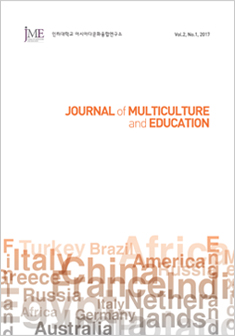
논문검색
HOME 학회지 논문검색
문화교류와 다문화교육, (2024)
pp.599~626
탈춤과 경극의 공연 양식 비교연구
본문은 한국의 탈춤과 중국의 경극 공연 양식을 비교 분석하여 전통성을 잃지 않으 면서 현대공연 양식으로 발전하는 것에 이바지하는 것을 목적으로 한다. 이를 위하여 한국의 국가무형문화재 13개 탈춤 중 3개의 탈춤과 매란방의 8대 극 중 3개의 경극을 분석 대상으로 선정하고, 공연 양식을 형식과 내용으로 나누어 공통점과 차이점을 비 교 분석하였다. 공연의 양식 중 형식은 가면, 의상, 무대, 소품이다. 탈춤과 경극의 형식에서 공통점 은 배우의 얼굴을 가려 등장인물에 집중하게 한다는 것이다. 더불어 전통 복식과 소품 을 통해 극의 내용을 풍부하게 한다. 차이점은 탈의 착용과 분장, 복식의 과장 정도, 실 내 무대와 야외무대, 소품의 제한성 등이다. 공연의 양식 중 내용은 극의 구성, 대사의 구성, 음악의 구성, 춤의 구성이다. 탈춤과 경극에서 내용의 공통점은 등장인물의 입· 퇴장으로 극의 장을 구분한다는 것이다. 또한, 운율이 있는 문체를 사용하고, 춤과 노 래의 반주가 구분되어 극의 흐름을 돕는다. 차이점은 옴니버스 형식의 서사로 이루어 지는지 특징적인 서사만 묘사하는지에서 시작해 이중적인 언어사용, 대사의 제한, 양 국의 전통 장단 사용, 잔치 이미지와 상징성 등이다. 탈춤과 경극은 양국의 전통문화이면서 도덕관념이자 정신세계의 역사적 산물이다. 탈춤과 경극이 전통 공연예술로서만이 아니라 현대에 지속해서 소비되기를 기대한다. 공연 양식 비교는 이후 더욱 광범위한 연구를 통해 객관화하는 과정이 필요할 것이다.
A Comparative Study of the Performance Forms of Korea Talchum and Chinese Peking Opera
This thesis aims to analyze and compare the performance forms of Korean Talchum and Chinese Peking Opera, with the goal of contributing to the development of modern performance forms while preserving their traditional essence. To this end, three from the thirteen National Intangible Cultural Heritages of Korean Talchums and three from the eight major plays of Mei Lanfang’s Peking Opera were selected for analysis. The study categorizes the performance forms into formal and content-based aspects, providing a comparative examination of their similarities and differences. Regarding formal elements such as masks, costumes, stages, and props, both Talchum and Peking Opera share features, the concealment of actors’ faces to focus attention on the characters, and the use of traditional costumes to enhance the narrative depth through stage props. Differences emerge from the choice between using masks or wearing makeup, the level of costume exaggeration, indoor or outdoor stage settings, and restrictions on props. In terms of content-based elements, including the structure of the drama, dialogue composition, music, and dance, similarities include the division of the drama into scenes marked by the characters’ entrances and exits, the usage of rhythmic language, and the separation of the drama’s progression through distinct dance and song accompaniments. Differences are found in the narrative approach-whether it is omnibus-style of focuses on specific narratives, the use of bilingual dialogue, restrictions on dialogue, traditional rhythms specific to each country, and the depiction of feasts in imagery and symbolism. Talchum and Peking Opera are not only representative of the traditional culture of their respective countries but also embody the historical evolution of moral concepts and the spiritual realm. There is a hope that both Talchum and Peking Opera will continue to be appreciated in the contemporary era, beyond their traditional performing arts context.
 다문화와 교육(Journal of Multiculture and Education)
다문화와 교육(Journal of Multiculture and Education) 문화교류와 다문화교육
문화교류와 다문화교육